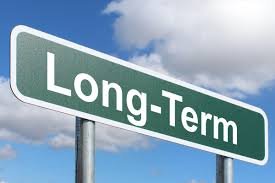How the Stock Market Drives the Economy (Not the Other Way Around)
What if the stock market isn’t just a scoreboard—but the playbook? In this piece, we explore how market prices actively shape the economy, influence decisions, and set the future into motion—long before the numbers catch up.
If you’re asking whether markets are mere reflections of the economy, you’re asking the wrong question. Here’s the truth in a nutshell: markets don’t follow the economy—they lead it. The stock market is not a mirror of GDP or employment. It’s a valuation mechanism that shapes economic reality by influencing behavior, capital allocation, and decision-making across the board.
The Market as a Leading Actor
Most people assume economic growth drives markets. But what if it’s the other way around? When asset prices rise, it creates a wealth effect. That effect changes consumer behavior, encourages borrowing, and fuels expansion. In this view, price leads fundamentals, not the other way around.
A soaring stock market makes CEOs confident. It lets companies raise cheap capital. It incentivizes hiring, investing, and risk-taking. Households, feeling wealthier from higher portfolio values, spend more. What starts as a market trend becomes an economic reality.
The Reflexive Engine
George Soros introduced the idea of reflexivity, where market participants’ biased views influence the fundamentals they are supposed to merely observe. In other words, prices do not reflect reality. They create it.
Consider this: if a tech stock surges on the promise of AI dominance, it can suddenly afford to acquire talent, buy smaller firms, and reshape its industry—not because its fundamentals changed, but because its valuation changed. Valuation becomes a strategic asset, not a trailing metric.
Valuation is Permission
Price isn’t a verdict; it’s permission. When the market values a company highly, it gives that company access to capital and attention. That capital allows it to grow. That growth justifies the valuation. The loop completes itself.
We often think price is the effect of value. But price can be the cause. Think about how unicorn startups operate. High valuations attract media, talent, and partnerships. Those inputs become self-fulfilling. The valuation came first—not profits, not even revenue.
Investors as Economic Architects
Market participants don’t just allocate capital—they shape the future. When investors pour money into green tech, biotech, or AI, they don’t just bet on trends. They create them. They provide the fuel. This makes markets not reactive but generative.
When a sector gets a high valuation, it attracts talent, startups, and innovation. That drives real-world development. So, the market isn’t following economics; it’s building it in real time.
Media, Narratives, and Policy Follow Price
Let’s be honest: policy makers, journalists, and even central banks watch markets as key indicators. When the market rallies, sentiment changes. When it crashes, stimulus arrives. In this way, markets don’t just signal reality—they provoke it.
And since most investors follow trends, not spreadsheets, it’s no surprise that narratives form after price moves. The valuation becomes the story, which becomes the policy justification, which becomes the next data point.
So What Should You Believe?
Stop treating the market as a weathervane. It’s the wind. The stock market is not downstream of the economy—it’s upstream. Its movements guide, influence, and in many cases, engineer the economy we experience.
If you want to understand where the world is going, don’t just read GDP reports. Watch where capital flows. Watch where valuations explode. Price isn’t trailing reality; it is pulling reality into its orbit.
The next time someone says the market is detached from reality, ask them which reality they mean—because in this world, valuation creates vision, and price is the architect of tomorrow.



